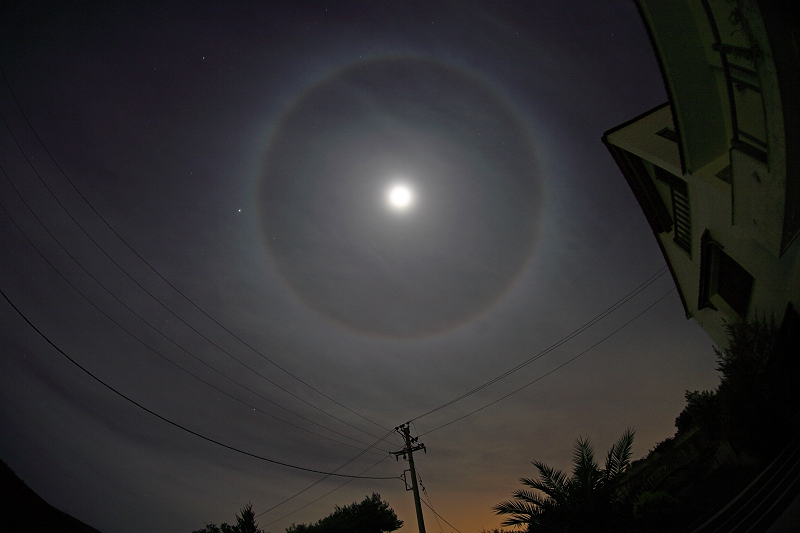
When the immediate environment is characterized with cold temperatures and wispy clouds, a moon around full will often
display the effect commonly referred to as a "lunar halo". Moisture within the wispy clouds will crystallize under
these cold temperatures and, when combined with lunar light, we have refractions within the hexagonal crystals which
lead to the effect depicted by the various phases of the moon. Furthermore, as is the case with
rainbows, the angle between the incident ray of lunar light
entering the ice crystal(s) and that redirected back to the observer (resultant ray) is known and, in the case of the
lunar halo, measures 22°; thus the size of the lunar halo depicted below is approximately 44° is diameter. Given the
large amount of sky these circles (or halos) cover, they are often missed when looking at the overhead moon.
Note: The bright speck of light to the immediate left of the apogee moon and at the nine
o'clock position is Jupiter lying at a distance of 631 million kilometers away, shining at magnitude -2.7 and with an
apparent diameter of 46.67 arc-seconds. The moon at a distance of 404,977 km away as per the image below is very close
to its maximum possible distance from earth, thus making it an
apogee moon as well.
|
Body: Moon Mass: 0.0123 x Earth Mean Eq Diameter: 0.2719 x Earth Distance: 404,977 km Sidereal Rev: 27d 07h 43m 11s Age: 15d 18h 22m Phase: 98.8° Diameter: 29.95' Magnitude: -12.4 Rukl: N/A |
 |
Date: October 31, 2012 01:00:20 UT+2 Location: Athens, Greece Equipment: Canon EOS 5D Mark I Zenitar MC 16mm/f2.8 @ f4.0 Exposure(s): 1 x 6.0 sec ISO 100 Canon RAW format 4368 x 2912 Image Size Manual Mode Software: Digital Photo Pro V2.1.1.4 Photoshop CS5 Processing: Resampling JPG Compression |